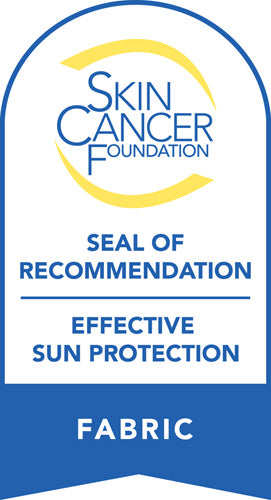Skin Cancer 101: Everything You Should Know About Melanoma
About 11,480 people die from skin cancer every year. 6850 of these deaths are just from melanoma alone.
In honor of melanoma awareness month in May, we're going back to the basics of skincare and how to prevent skin cancer and encouraging skin cancer screenings. Here's what you need to know, the risk factors, and the steps you need to ensure maximum sun protection.
What is Skin Cancer?
Cancer occurs when something malfunctions in a cell. Instead of forming properly functioning cells, the DNA gets damaged and the cells don't work. They keep growing until they cause the system to malfunction, and kill their host.
Skin cancer is when cancer cells grow unchecked in the epidermis - in your skin. There are several types of skin cancer. The three most common cancers are basal cell carcinoma, squamous cell carcinoma, and melanoma. Of these, melanoma is the deadliest.
But even still, even with early detection, cancer research shows patients with melanoma typically see a five-year survival rate of 98%. Even though treatment options are more advanced than ever before, the key is to catch it early with screenings.
What Causes Skin Cancer?
The most common cause of skin cancer is UV rays. Typically this comes from the sun, but it's also just as deadly from tanning beds, especially for those under 18.
That's why skin cancer is most often found on the hands, face, or ears. The skin where you experience frequent sunburns is more likely to develop skin cancer than your more protected regions.
But since we know exactly what causes skin cancer, that makes it much easier to prevent.
What Does Skin Cancer Look Like?
The scary part about skin cancer is it can be easily mistaken for a freckle, birthmark or a mole. So if you can't remember whether or not that mark was always there, look for these signs.
Asymmetry
Is one side lighter or darker than the other? Is it irregularly shaped? Most moles and freckles will be uniform in shape and color. Keep an eye out for asymmetric marks.
Irregular Borders
Moles, freckles, and birthmarks are usually well-defined with smooth edges. If a mark has an irregular or blurred border, pay attention to it.
Color
Is the mark one solid color? Or do some parts look black while others may be pink or white? If your mark isn't a solid color, have your doctor look at it.
Size
Is the mark bigger than a pencil eraser? You should pay attention to that, but keep in mind some melanomas can be smaller. Larger marks on your skin are more likely to be a sign of a growing cancer.
Growth
When you check on the mark from time to time, does it always look the same? Or does it get bigger, or change shape or color? If it changes, have a doctor look at it.
Here's Exactly How to Tell if You Have Skin Cancer
First, regularly check on your skin and look for any skin growths, marks or lumps that might indicate skin cancer. If you notice anything worrisome, get it checked out by a doctor as soon as possible.
Whether or not you notice anything that might indicate skin cancer, you should get regular screenings every year. If you're prone to skin cancer you should get screened more often. You're likely at a higher risk if you have a history of skin cancer in your family, or if you had frequent sunburns, especially as a child.
Only a doctor can confirm whether that's skin cancer or just a weird mole.
Here's How to Prevent Skin Cancer
Fortunately, skin cancer is easily preventable. It comes down to protecting your skin from UV rays, especially for children.
Avoid tanning and tanning beds. Tanning, especially with oils, is just deep-frying your body with the rays from a giant burning star. Tanning boosts your risk for skin cancer because you're repeatedly exposing yourself to UV rays.
Children are especially vulnerable, so don't let teenagers go tanning.
Make sure you always wear sunscreen - even in the winter. Snow can act like a giant mirror and reflect UV rays at you. You should also wear sunscreen while driving, or anytime you're out in the sun, even just for a short walk.
Don't forget about sensitive areas like your lips or scalp. And while you're at it, it doesn't hurt to get UV blocking sunglasses too.
You should also invest in UV protective hats and clothing. They're an easy way to always ensure you're protected from UV rays.
More men die of skin cancer than women. So as a man, make an effort to always go to your cancer screenings and regularly check your skin for new marks.
Start When They're Young
Protecting your skin - or your child's skin - throughout the first 18 years of living can lower your risk of some types of skin cancer by 78%. So when you're kids complain about sunscreen, remind them why right now it's more important than ever that they protect their skin.
But keep in mind that not all sunscreens are created equally - not even close. A study in 2017 tested 880 different sunscreens and found that 73% of them contained "worrisome" ingredients - or they straight up didn't work. Make sure you're investing in a good sunscreen.
On top of sunscreen, make sure your kids wear clothes that protect them from UV. It's an effective, easy way to protect their skin without the sunscreen battle.
You Can Lower Your Risk of Skin Cancer
It is important to raise awareness to educate yourself and those around you about the dangers of skin cancer. There's a lot you can do to protect you and your children from harmful UV radiation and skin cancer. Make sure to use UV protective gear and sunscreen every time you go out, and make sure you get regular screenings.
Skin cancer is one of the most preventable cancers. Now you know more about skin cancer, and you can stay safe.
Ready to protect your skin? Check out our entire line of UV protective clothing here.



